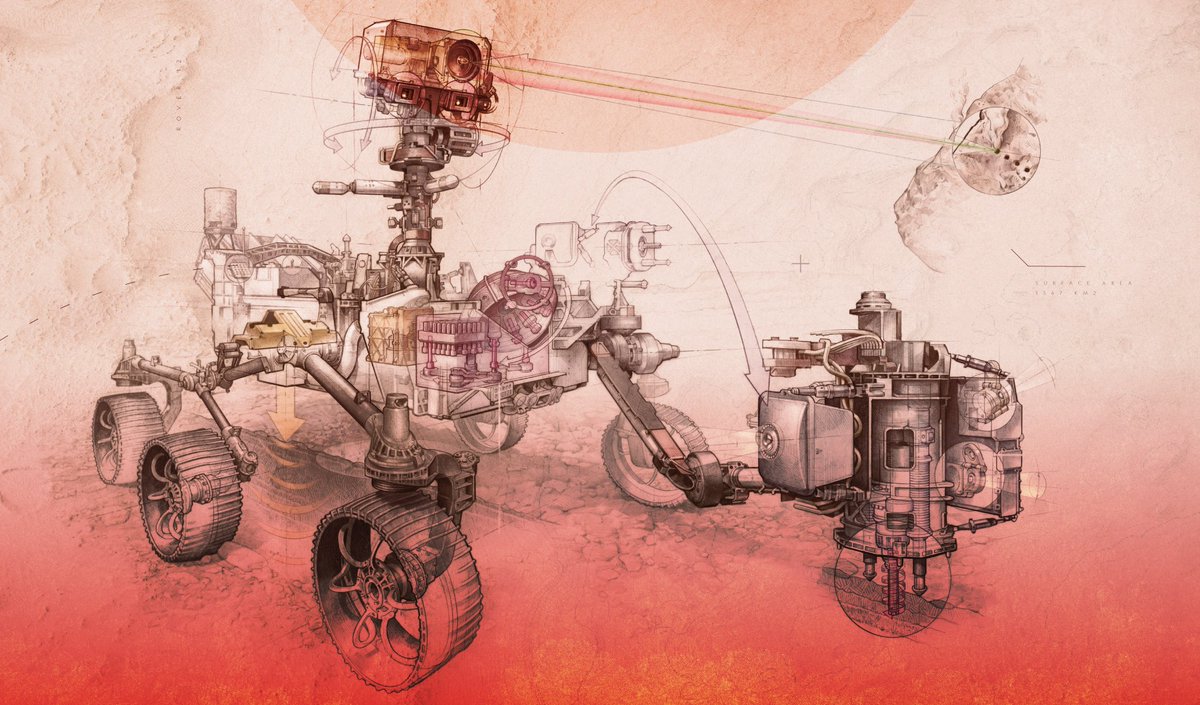
Greetings! I’m @vmjaggard99, the executive editor for science @NatGeo, and I’m here to talk about your brain. Here’s mine, which I can attest is feeling some strain after a year of COVID-19: 

Grief. Anxiety. Anger. Boredom. Fear. We’ve been grappling with a cornucopia of difficult emotions triggered by the pandemic. In a December 2020 Gallup poll, people in the U.S. rated their mental health as worse now than at any point in the last 20 years. on.natgeo.com/30zeBbp
As my colleague @CraigAWelch noted back in April 2020, social scientists were worried from the start that stay-at-home orders would take a toll. Not even a month in, people were buying more cigarettes, alcohol, and guns—signs of coping mechanisms at work. on.natgeo.com/38vRvGS
Now, after a full year, it’s clear that our inherently social species really suffers under prolonged stress and isolation. “We’re all walking around with some mild cognitive impairment,” UC Irvine neuroscientist @mike_yassa recently told @TheAtlantic. on.natgeo.com/3qBfkTV
Of course, the situation has yielded some truly unexpected effects, too. In April, writer @RebeccaRennerFL stunned our whole newsroom with this (highly relatable) report on why the pandemic is giving people unusual dreams: on.natgeo.com/3bCWk3d
As Rebecca so eloquently puts it, @Harvard prof Deirdre Barrett and other researchers studying the phenomenon found that “pandemic dreams are being colored by stress, isolation, and changes in sleep patterns—a swirl of negative emotions that set them apart from typical dreaming.”
And who in 2019 could have predicted “zoom fatigue” would become a common ailment? But also last April, writer @ByJuliaSklar explored the neurological and psychological responses people are having to all manner of video chats. on.natgeo.com/3qIclcl
Humans are wired to read non-verbal cues that we cannot see in these boxy gatherings. Though Julia also points out that increased comfort with video calls can benefit the neurodiverse, who may struggle with filler talk and other excess sensory triggers that clutter a meeting irl
In this later stage, writer Nicole Johnson found that people are procrastinating more in response to prolonged emotional tension. Procrastination “is not a time-management problem; it is an emotion-management problem,” @Carleton_U prof Tim Pychyl tells us. on.natgeo.com/3t8BKxE
To cope, people have adopted pets, indulged in nostalgia trips, and planned aspirational vacations. I've been falling down culinary wells on YouTube. Forget sourdough: The real achievement is baking the bread eaten in Pompeii in A.D. 79
So yes, the pandemic has been messing with our heads. Now that we have vaccines, we have a measure of hope. But I join the chorus imploring everyone to not ease up yet. We have a way to go before herd immunity, and virus variants could spell trouble if not tamped down quickly.
“The needle of public opinion is clearly tilted towards relaxation, but with the high rate of current infections in the U.S. and the variants of concern on the rise, we may regret it,” @HopkinsMedicine prof Stuart C. Ray tells writer @SarahE_Richards on.natgeo.com/3evs640
Right now, the best available science says get a vaccine as soon as you’re able, #WearAMask in public, and keep your distance for just a little while longer. Oh, and be kind to yourself and others. In my experience, that’s the best way to battle pandemic stress.
• • •
Missing some Tweet in this thread? You can try to
force a refresh





